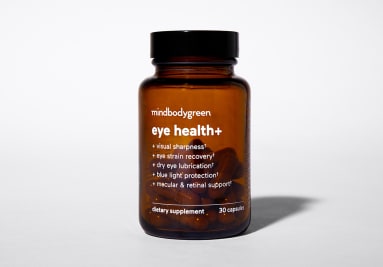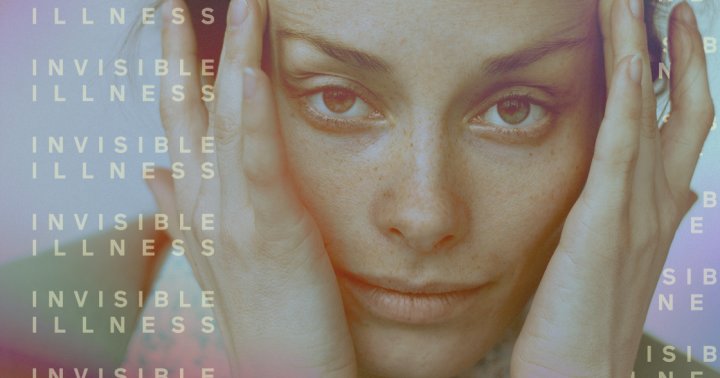8 Small Ways To Protect Your Eyes Daily, From A Holistic Optometrist
Visual demands are higher than ever.


Integrative Optometrist
Integrative Optometrist
Marina Gurvich, OD is a board-certified, residency-trained integrative optometrist specializing in a whole-body approach to eye care. A graduate of University of Georgia, Dr. Gurvich pursued her doctorate at Southern College of Optometry and then completed a residency in Ocular Disease and Refractive Surgery at Woolfson Eye Institute. She writes for several optometric and wellness resources and is currently creating an online platform that will have a root-cause focus on eye health.
Image by PeopleImages / iStock August 21, 2023 Our editors have independently chosen the products listed on this page. If you purchase something mentioned in this article, we may In today’s fast-paced, technology-driven age, visual demands are higher than ever. Since all of the body's systems and organs are connected, it's not surprising that your overall health can also affect your eye health. It is essential to take care of your eyes early on to maintain clear and healthy vision and prevent eye disease as you get older. Let's take a look at some of the most common eye conditions and how to prevent them using healthy lifestyle practices.
Advertisement
This ad is displayed using third party content and we do not control its accessibility features.
A few common eye conditions
Cataract:
Cataract is a condition that affects the crystalline lens of the eye. The naturally clear lens is composed of specialized proteins, called crystallins, that have specific optical properties to help light focus on the retina. These proteins also function to absorb shortwave (blue) visible light, ultraviolet, and infrared radiation to protect the eye.
As a person ages, oxidative stress leads to the production of free radicals, damaging the integrity of the cells and denaturing these specialized proteins, thus reducing the various metabolic efficiency of the lens. This then induces the formation of a cataract.
Symptoms include blurry, hazy vision with more glare and light sensitivity, particularly at night. A cataract is a leading cause of blindness worldwide1.
Advertisement
This ad is displayed using third party content and we do not control its accessibility features.
Macular degeneration:
Macular degeneration is a condition that affects the retina, particularly a structure called the macula and the underlying tissue called the choroid.
The retina is one of the most metabolically active systems in the body, consisting of multiple layers of specialized cells, which all function together to properly focus light. It is important to note that the macula has a strong concentration of carotenoids, such as lutein, zeaxanthin, and meso-zeaxanthin, which are naturally occurring pigments that filter high-intensity, short-wavelength (blue) visible light to protect the most sensitive ocular area from light-induced stress2.
Macular degeneration causes the breakdown of these specific retinal cells. Oxidative stress and inflammation keep these cells from maintaining proper protein and lipid metabolic homeostasis. This leads to small deposits under the retina called drusen3. As macular degeneration progresses, more drusen accumulate and subsequently trigger the release of vascular endothelial growth factor (VEGF) to promote the formation of more abnormal blood vessels.
There are two types of macular degeneration: dry (or non-neovascular) and wet (or neovascular). Dry macular degeneration happens when there is the presence of drusen only, while wet occurs when new blood vessels form. The dry form is the earliest, most common form of macular degeneration. The subsequent wet form is more sight-threatening. It is one of the most common causes of blindness and profound vision loss over the age of 60, and it's expected to affect nearly 300 million people worldwide by 20404.
Advertisement
This ad is displayed using third party content and we do not control its accessibility features.
Glaucoma:
Glaucoma is another condition that affects the retina, but a different structure called the optic nerve. A healthy optic nerve transmits signals from the retina to the brain for the interpretation of visual stimuli.
Glaucoma is thought to be a neurodegenerative disease of the eye, similar to Alzheimer’s in the brain. Unlike cataract and macular degeneration, which both affect central vision and lead to early symptoms, glaucoma does not have any symptoms until the disease is much more advanced. As such, it is often referred to as the “silent disease.” It's another common cause of blindness, with an estimated number of patients being affected to exceed 110 million by 2040.
Diabetic retinopathy:
Diabetic retinopathy is a major complication of systemic diabetes that presents with retinal bleeding and swelling. Hyperglycemia can cause the blood vessels to dilate in a way that leads to retinal ischemia and hypoxia, which triggers the upregulation of VEGF, promoting further vascular permeability5.
It is projected that approximately 160 million patients will present with diabetic retinopathy by 2045. Managing systemic blood sugar is key to mitigating this condition.
Advertisement
This ad is displayed using third party content and we do not control its accessibility features.
Dry eyes:
Dry eyes have become a newly growing epidemic, affecting roughly 30 million Americans and at least 350 million people worldwide of all ages. It affects several important structures, such as the tear film, cornea, conjunctiva, and lacrimal and meibomian glands. Some of these are responsible for optical power, which is why patients with dry eyes can present with blurry vision.
Though many people associate dry eyes with red, irritated, and tired eyes, the condition can be serious and debilitating. In its most advanced stage, it has profound effects on vision, eye health, and overall health, leading to vision loss, ocular pain, decreased quality of life, and even severe depression. Inflammation is a leading driver of dry eyes.
Myopia:
Myopia is becoming increasingly common in children who present with nearsightedness. It was once thought to be a simple vision error that could be corrected with glasses, contact lenses, or refractive surgery such as LASIK. However, new studies bring attention to the growing evidence that myopia can increase one's risk of many of the conditions listed above, including cataract, macular degeneration, glaucoma, and retinal detachment6.
Advertisement
This ad is displayed using third party content and we do not control its accessibility features.
My daily eye care checklist
Eye diseases occur due to a combination of genetics, oxidative stress, and inflammation. This means that you can employ lifestyle factors that reduce your chance of the conditions above. Here are a few I recommend adding to your routine:
According to the American Optometric Association, eye exams should begin as early as six months of age. The pediatric population should get exams to monitor potential refractive error (with myopia being on the rise), binocular vision development, and the presence of any congenital eye disease. After a child starts school at about age six, eye exams should be done annually unless sooner warranted.
2.
Wear sunglasses when you spend prolonged periods of time outside
Getting exposure to natural sunlight is beneficial (and essential) for health. The sun provides one of the best forms of vitamin D, and getting some exposure first thing in the morning (ideally before 10 a.m.) is necessary for regulating our circadian rhythms. It is also critical for myopia prevention and progression. However, too much UV exposure can be damaging to the eyes and increase the likelihood of cataracts, macular degeneration, and several other eye conditions.
If you're planning to spend more than 15-30 minutes outside, I recommend wearing sunglasses. And always avoid directly staring at the sun.
3.
Wear blue-light blocking lenses with prolonged exposure to devices
Many studies do suggest that exposure to blue light (like exposure to UV light) can increase the risk for many of the eye diseases7 mentioned above.
The jury is still out on whether blue light-blocking glasses benefit your eyes. Studies have not proven that wearing them protects against eye strain and eye fatigue. Anecdotally, though, the majority of my patients actually do report less eye strain and eye fatigue while wearing these lenses.
And with the amount of time we spend on digital devices, I believe it would behoove us to wear blue light-blocking glasses to protect the health of our eyes and relieve any potential eye strain.8
4.
Eat a Mediterranean style diet
As healthy as your diet may be, nutritional gaps can still exist. This is where supplementation is helpful. Supplements are important for protecting against and preventing further progression of many ocular diseases. Several eye vitamins have been shown to have a protective role, such as:
Numerous studies have demonstrated the importance of exercise on eye health. Physical activity has been shown19 to protect against glaucoma, macular degeneration, and diabetic retinopathy. As for how exercise protects the eyes, several mechanisms19 have been proposed. Ready to get a little nerdy? Here are a few:
The importance of sleep for overall health is not surprising. The eyes are no exception8! Many of the restorative and detoxifying mechanisms that happen as we sleep are essential for eye health, as well. Sleep conditions like sleep apnea also increase one's risk of glaucoma.
8.
Use safe beauty products around the eyes
Good hygiene is important for keeping the ocular microbiome balanced. Make sure to clean your eyelids and eyelash margins to keep excess oils and bacteria out of the eyes, and use products that don't contain harsh chemicals.
These ingredients can irritate the ocular surface and contribute to dry eyes, contact lens intolerance, and makeup sensitivity. According to the latest research, a few to avoid include parabens, phthalates, perfumes, and per- and poly-fluoroalkyl substances (PFAS). See this report for a complete list22.
The takeaway
Although some common ocular conditions have genetic predispositions, most are driven by lifestyle factors. Implementing this simple eye health checklist can have meaningful effects not only on your eye health but also on your overall health. Remember, the body is an intricately connected and integrated ecosystem that works in unison, not in isolation. And creating a healthy ecosystem within will help you better see the world around you.

 JaneWalter
JaneWalter 
































